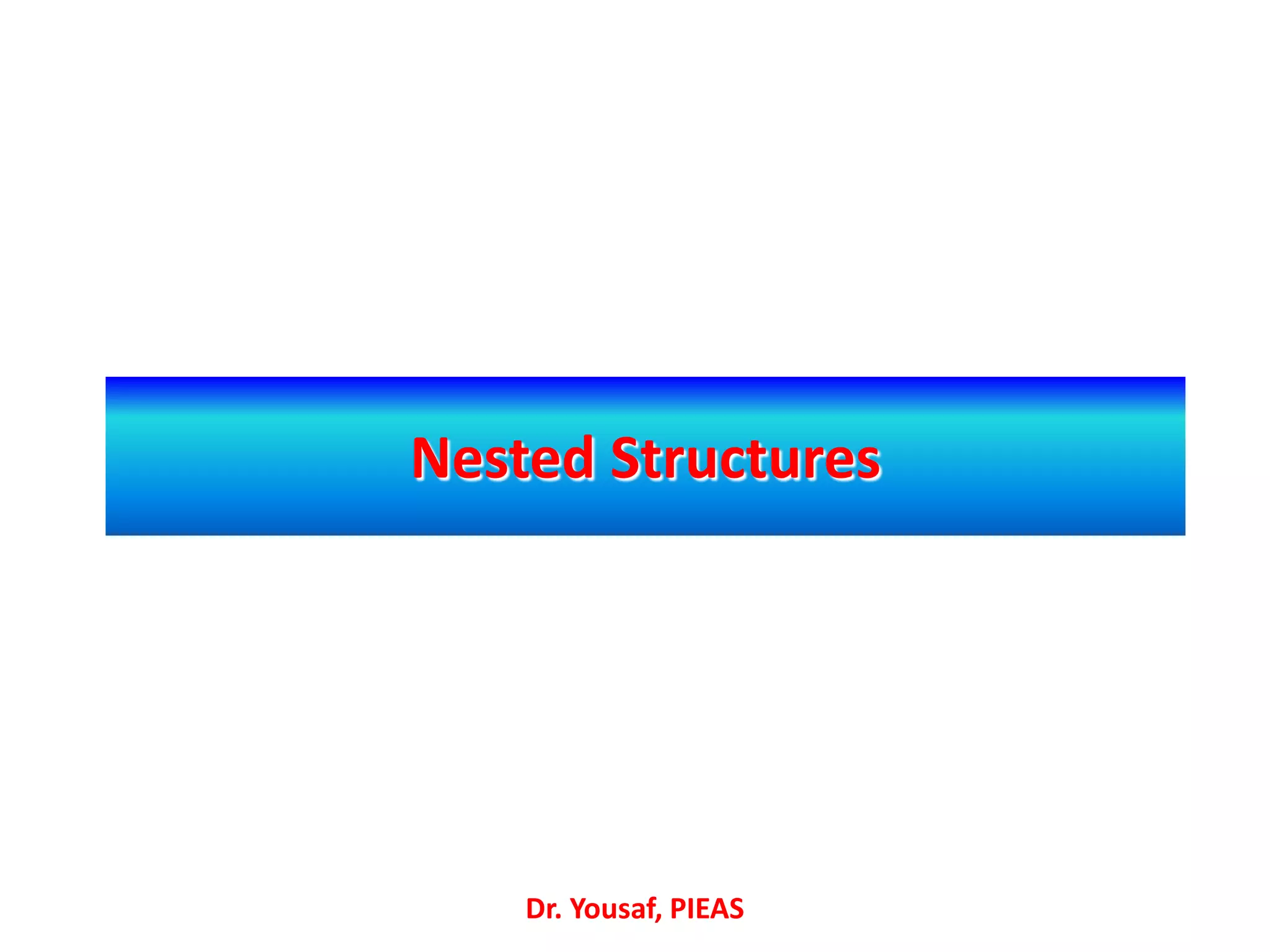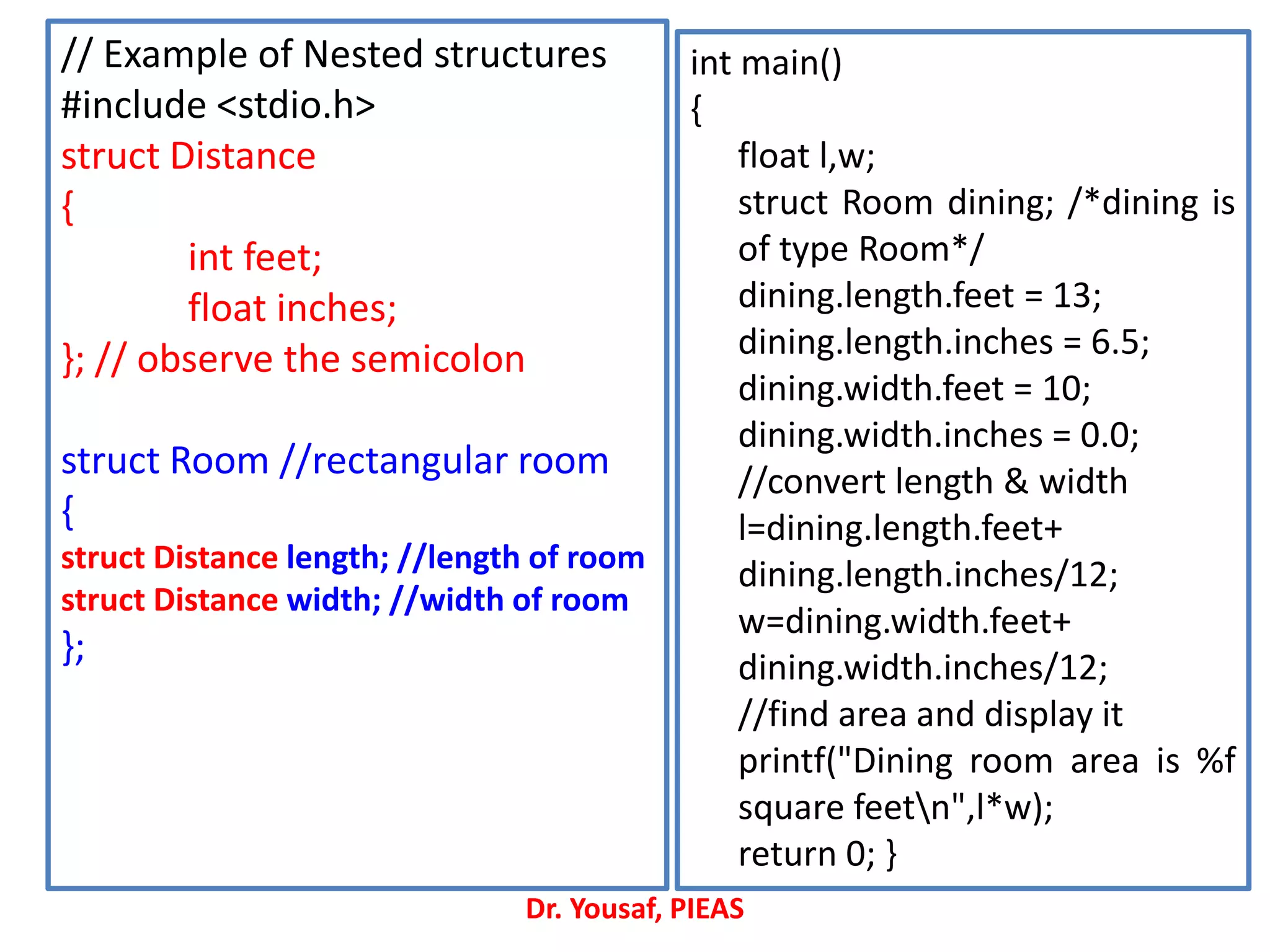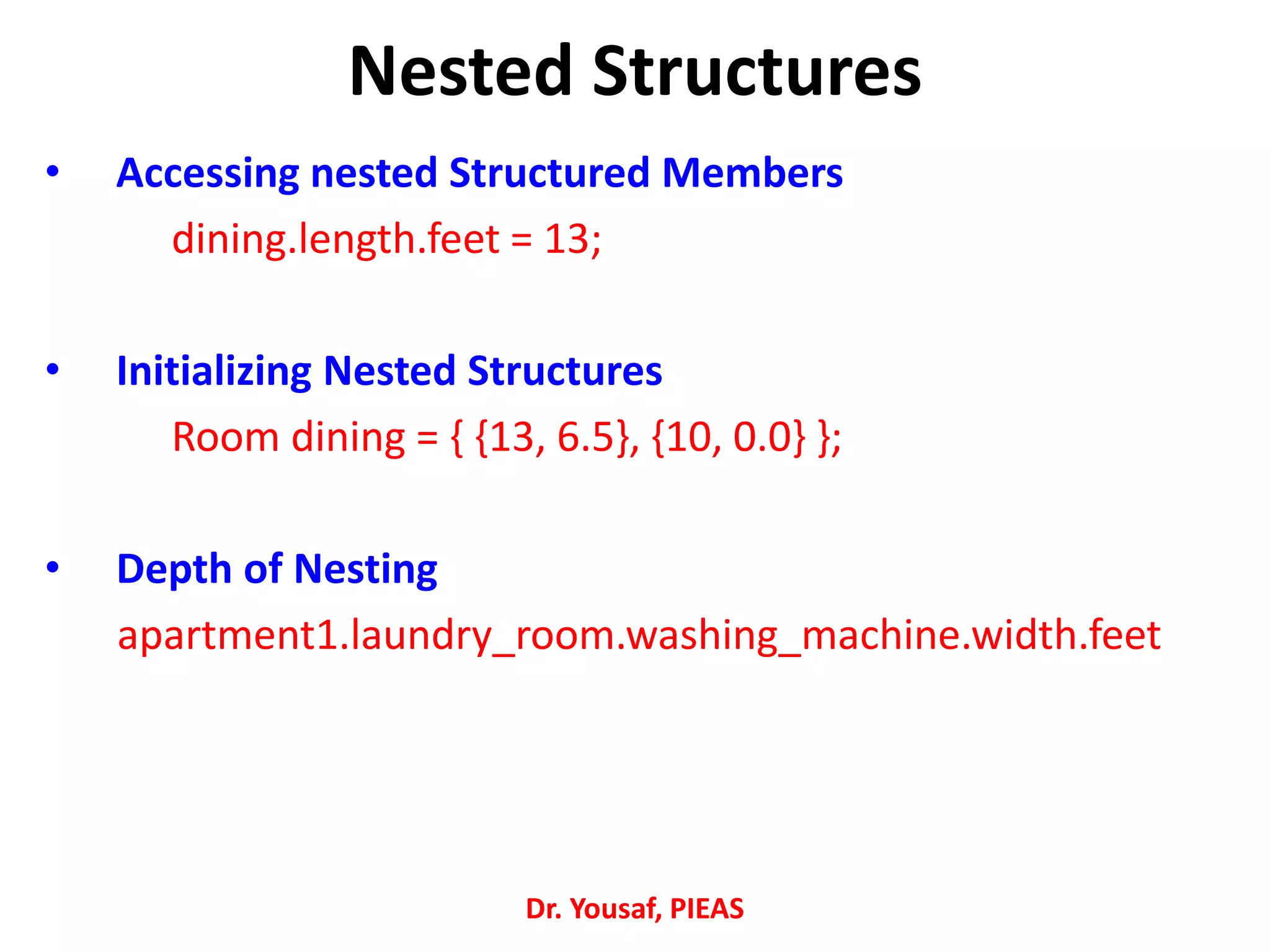1) The document discusses structures in C programming, which allow grouping of related data types into a single data type.
2) A structure called student is defined containing member variables like rollnumber, semnumber, and age_years. A variable of this structure type is initialized and its members are accessed.
3) Structures can contain other structures to represent nested relationships between data. They provide a way to organize and manage related data in an application.

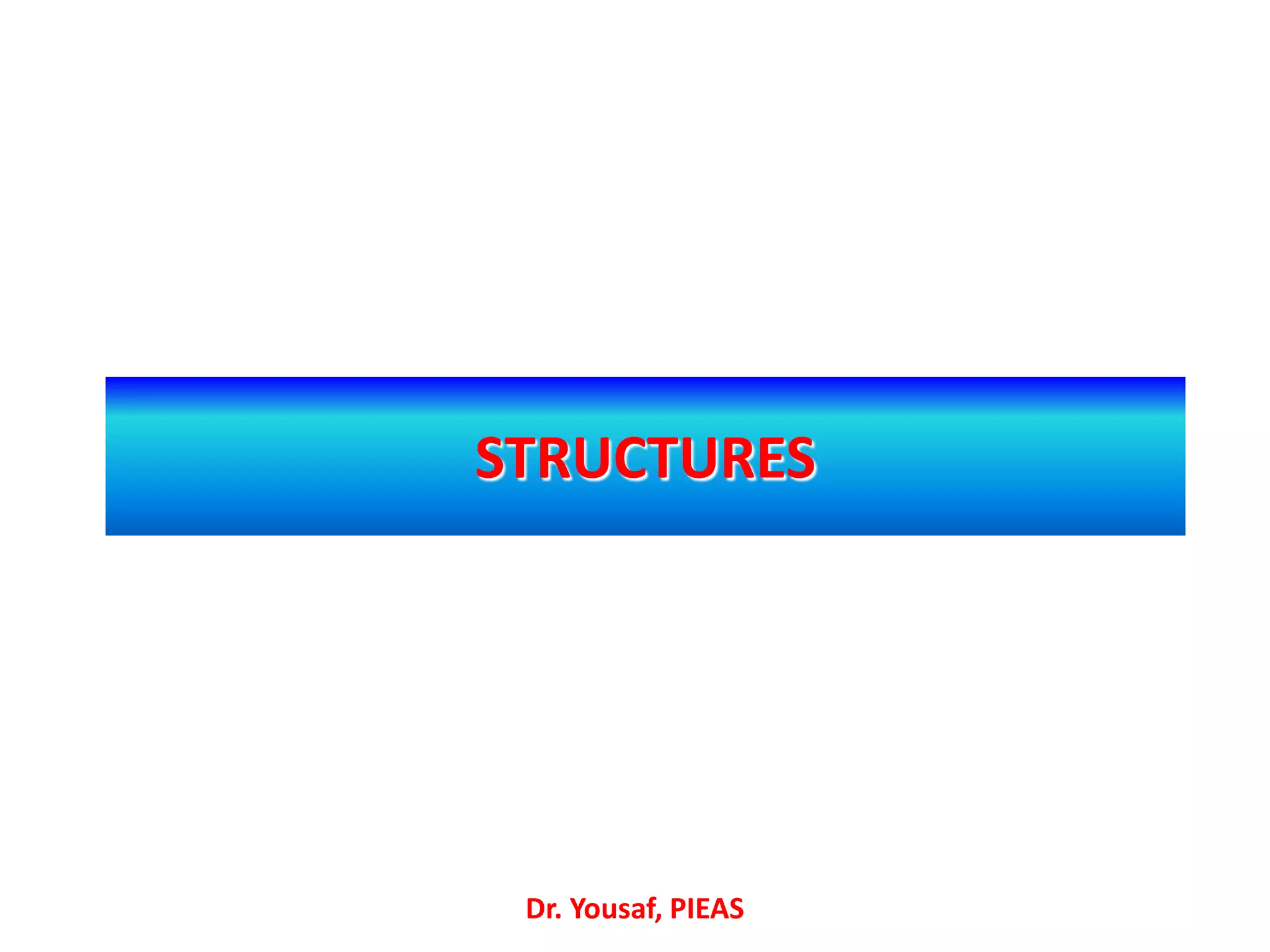

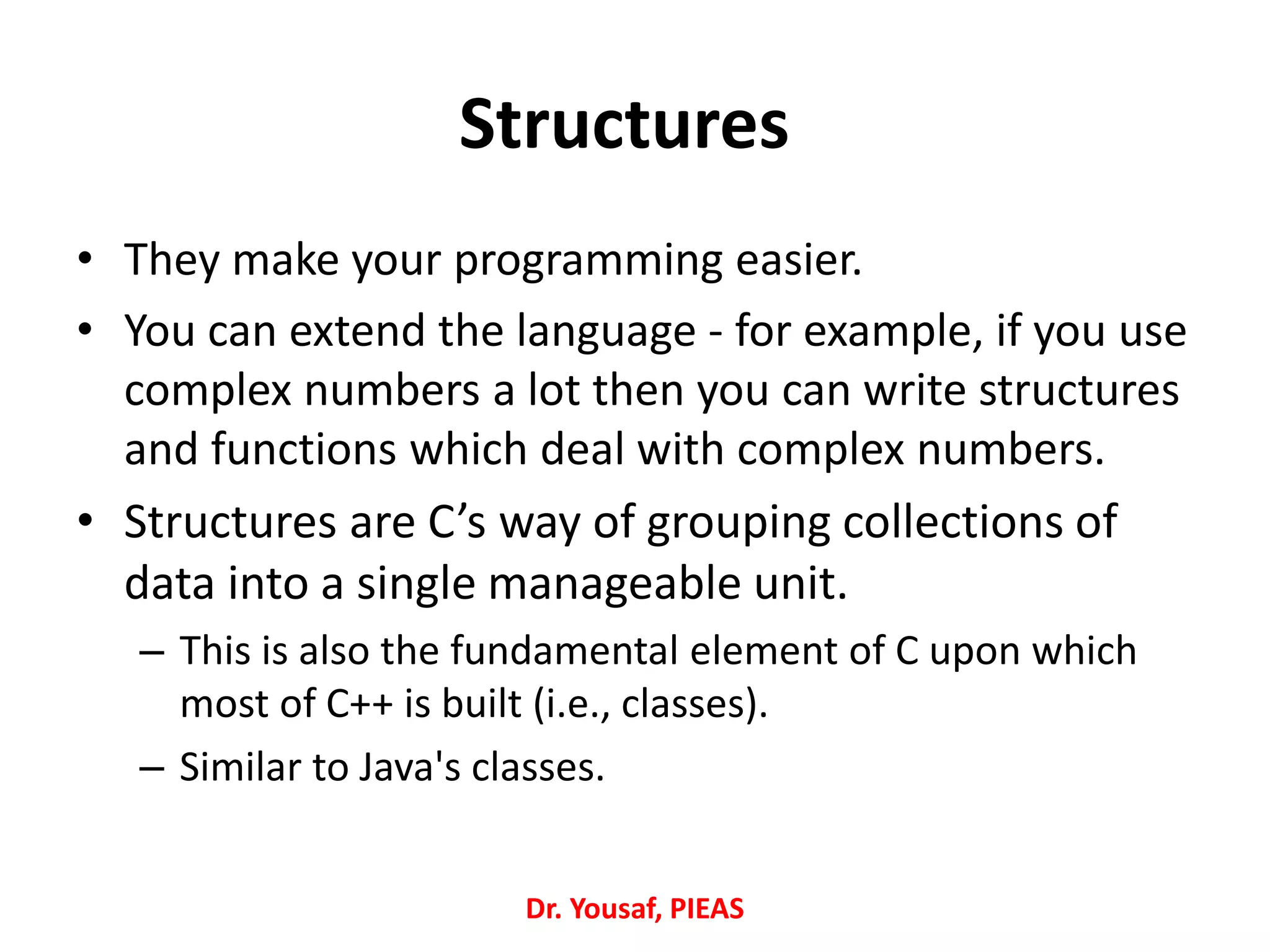

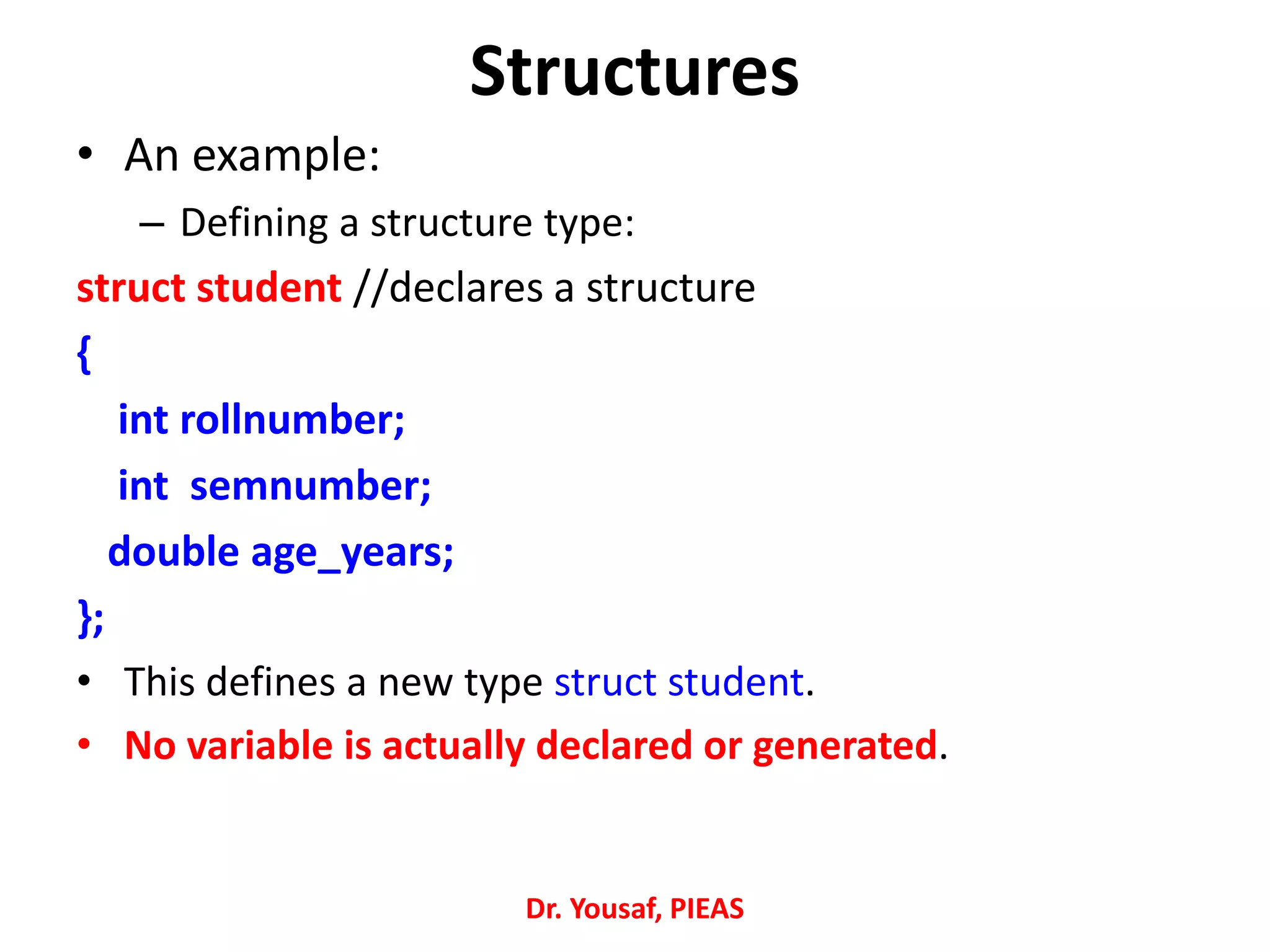


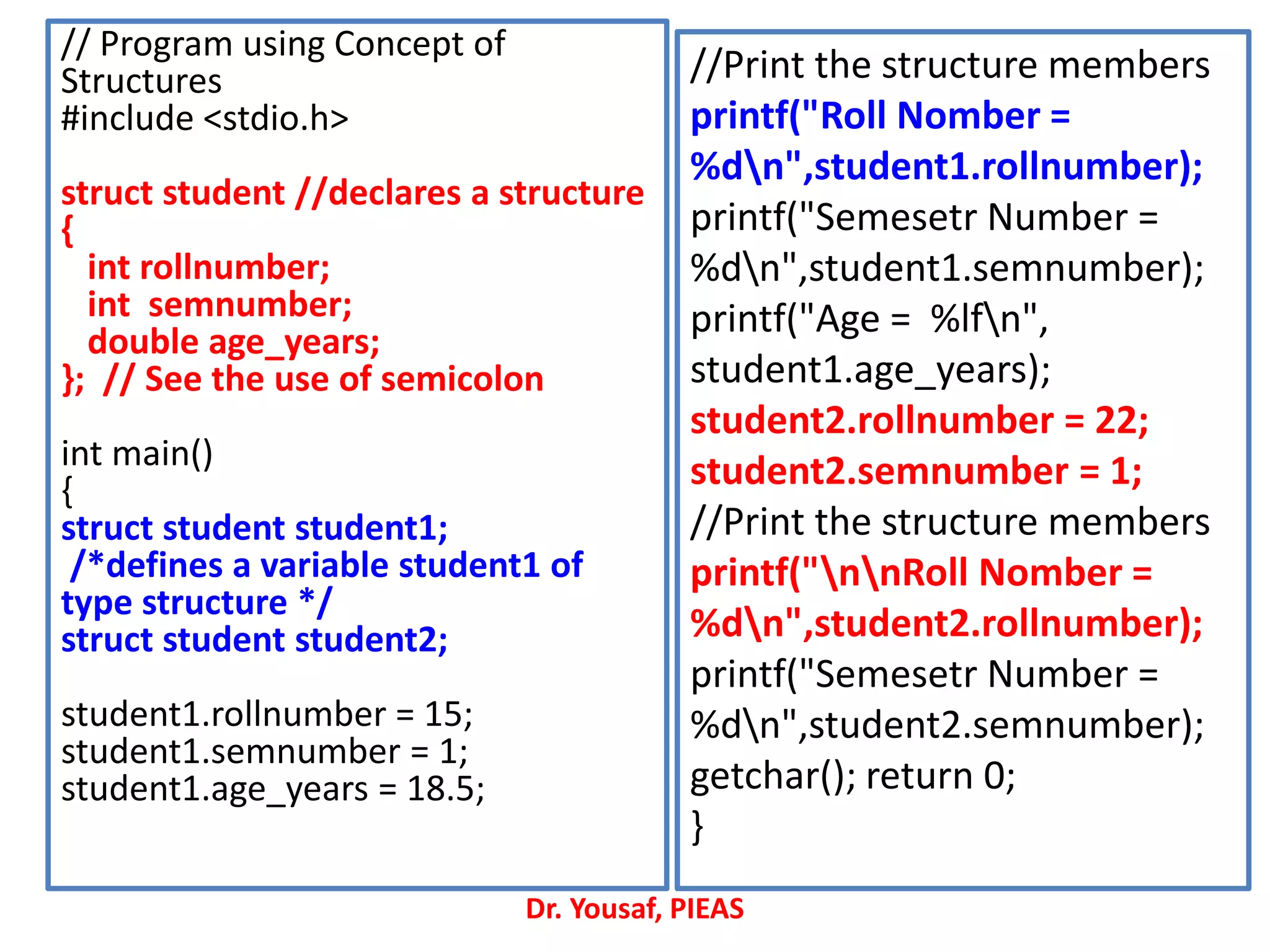

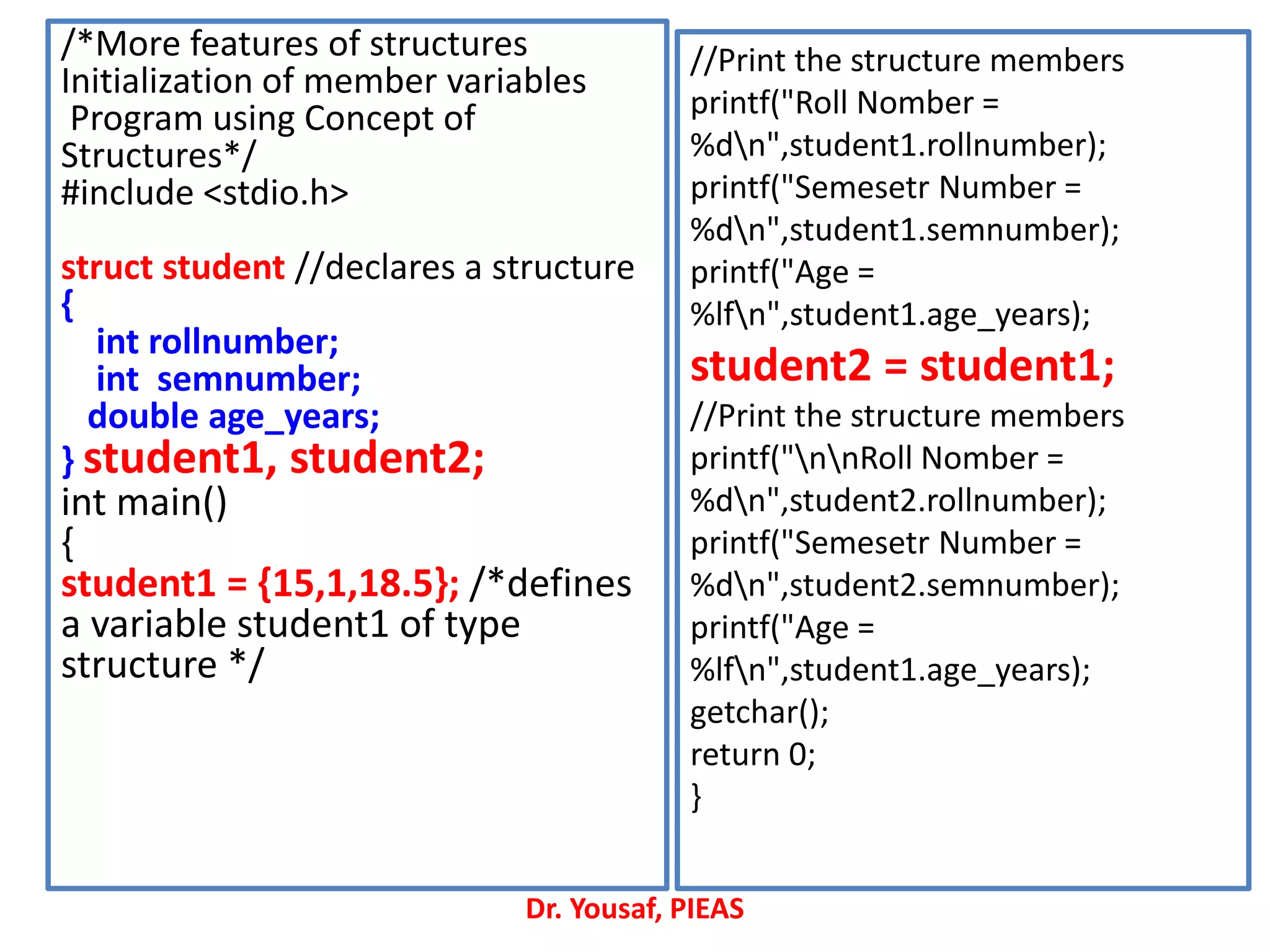
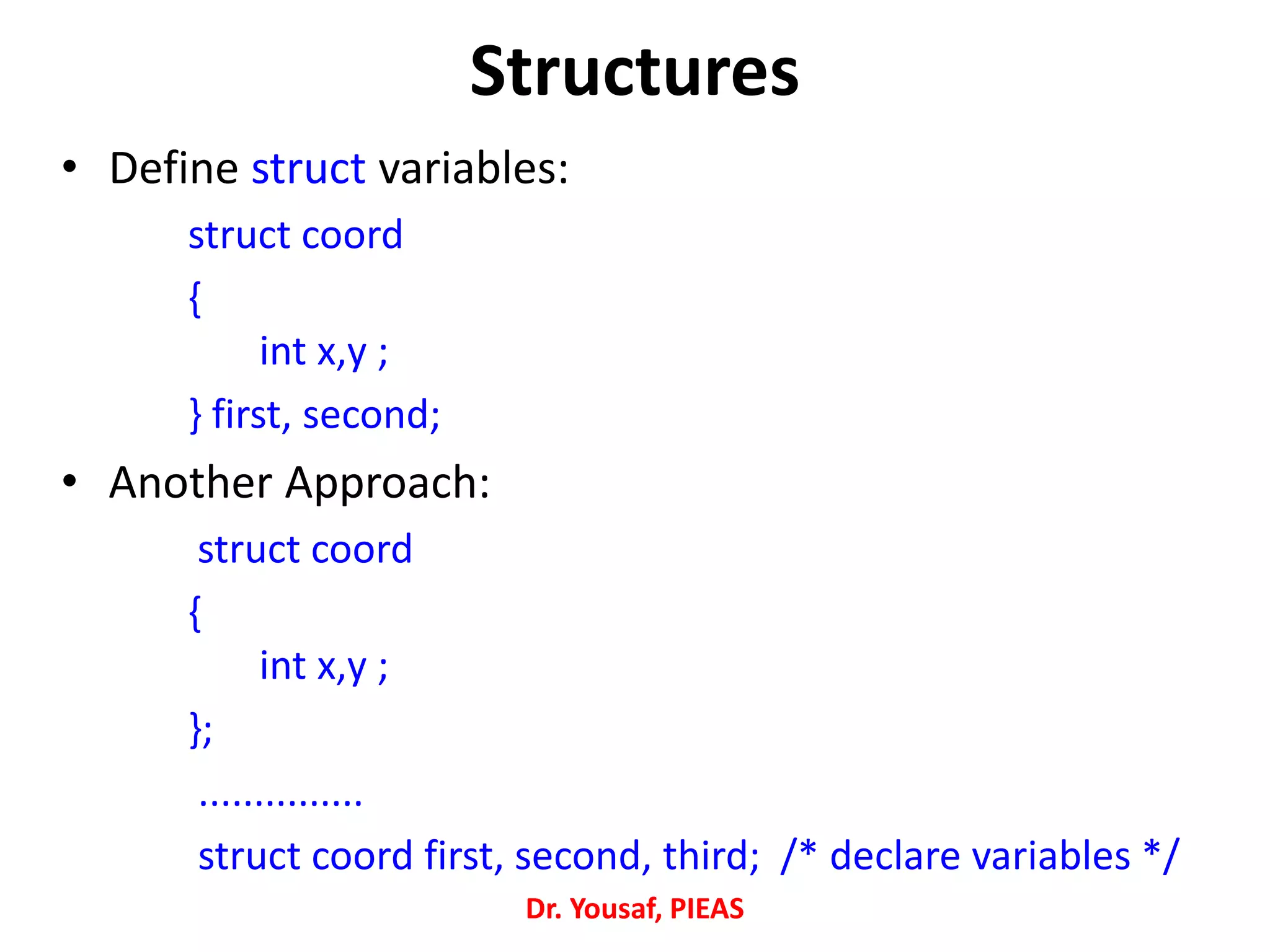

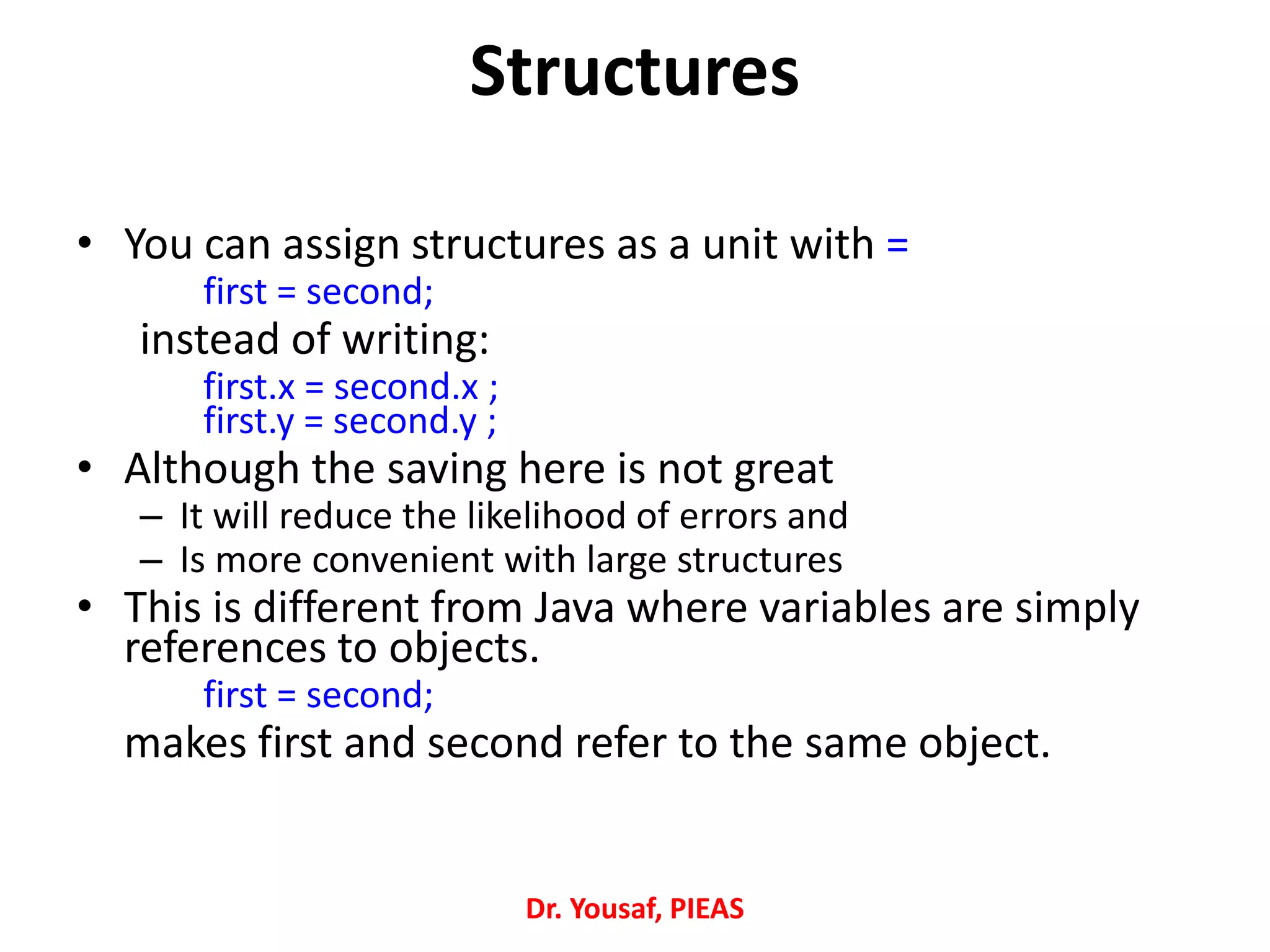
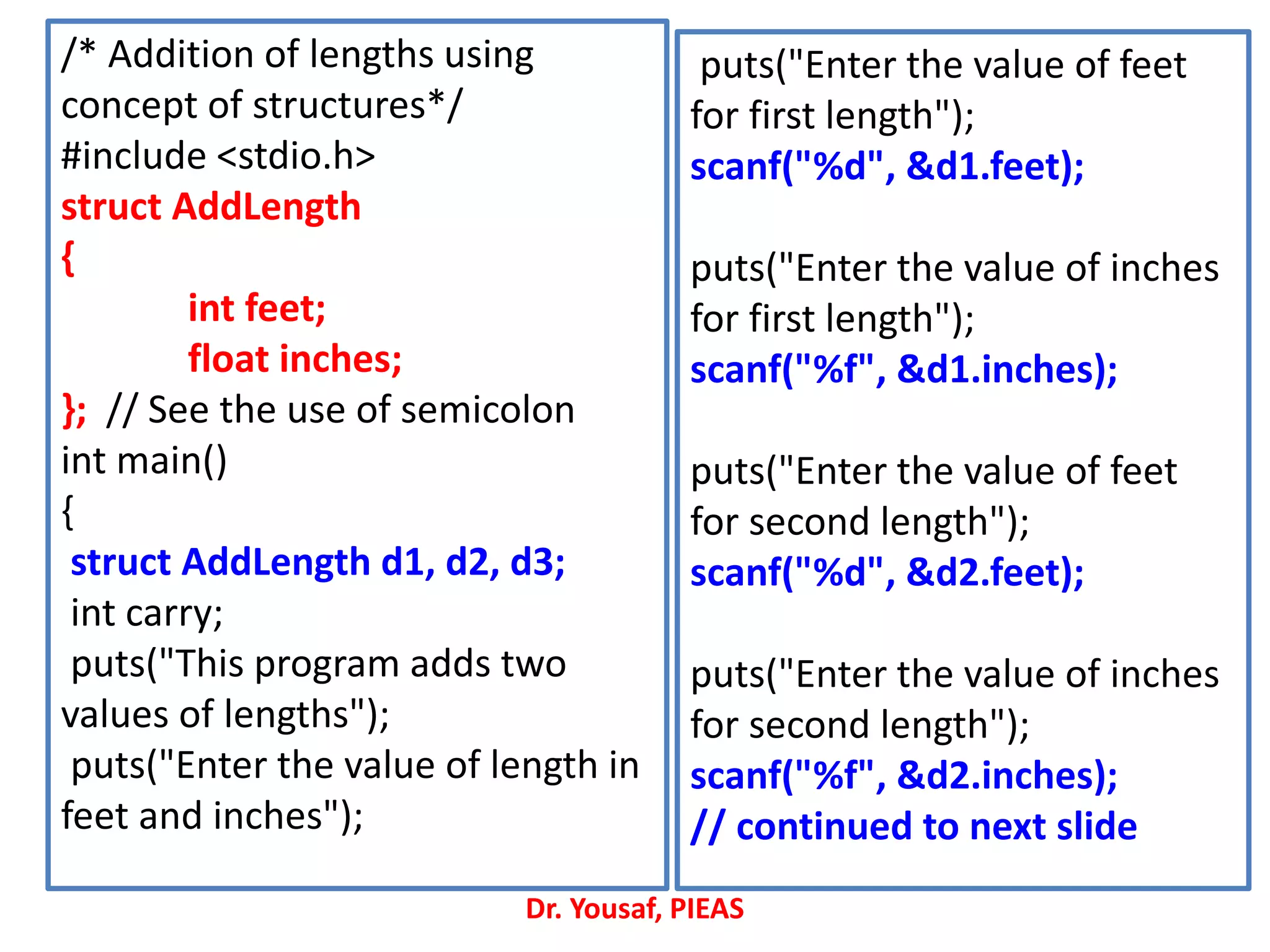
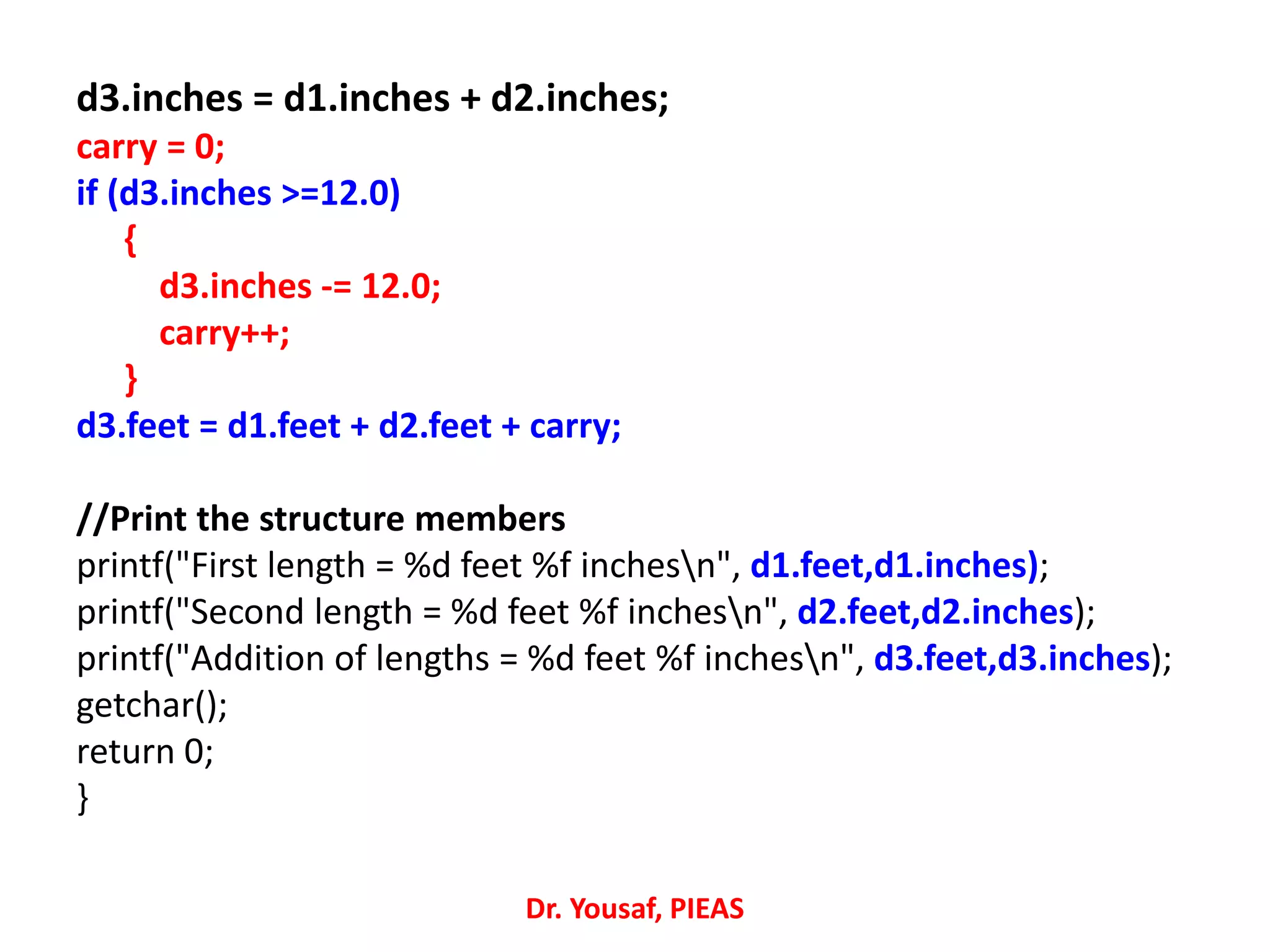

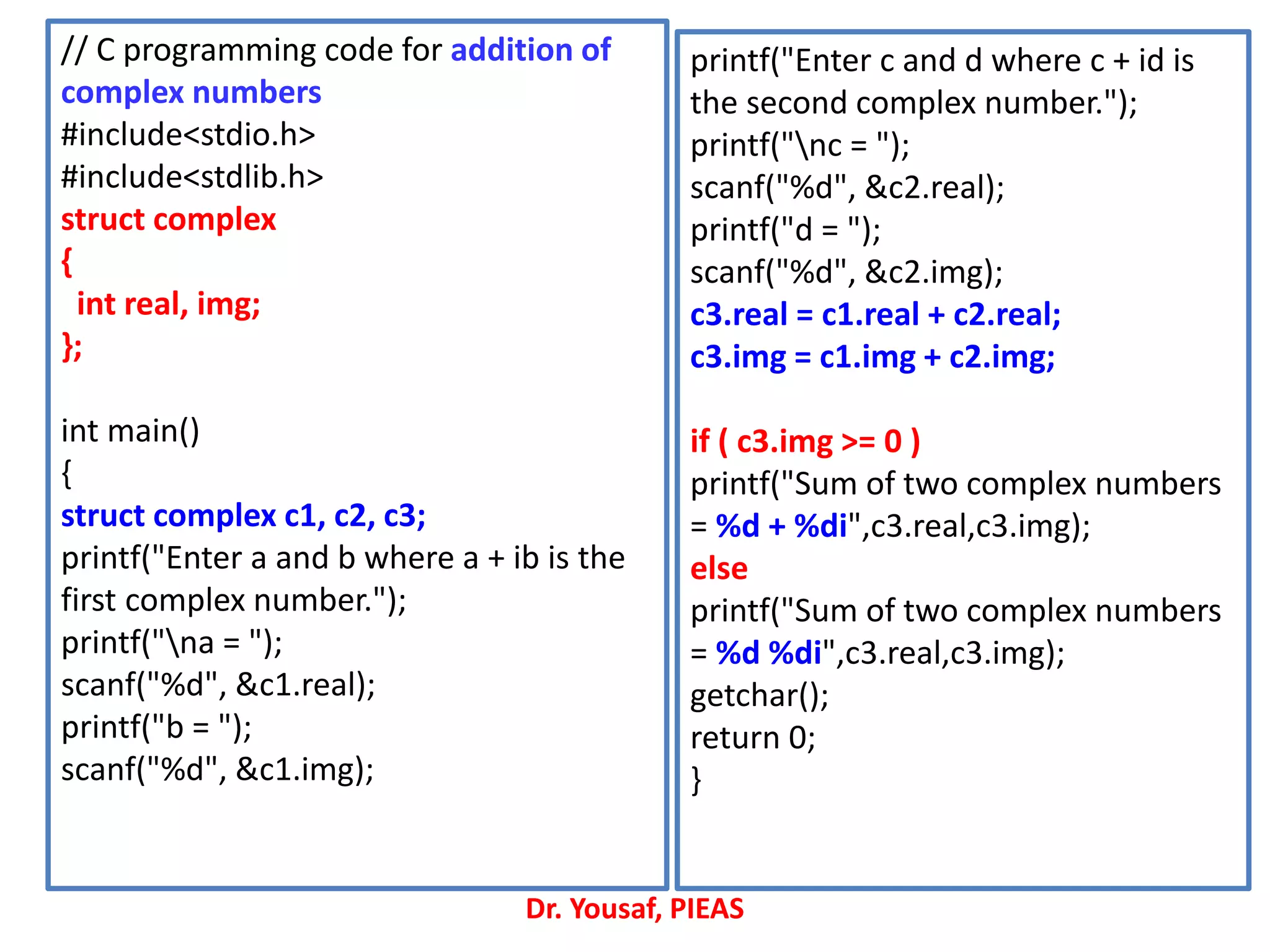


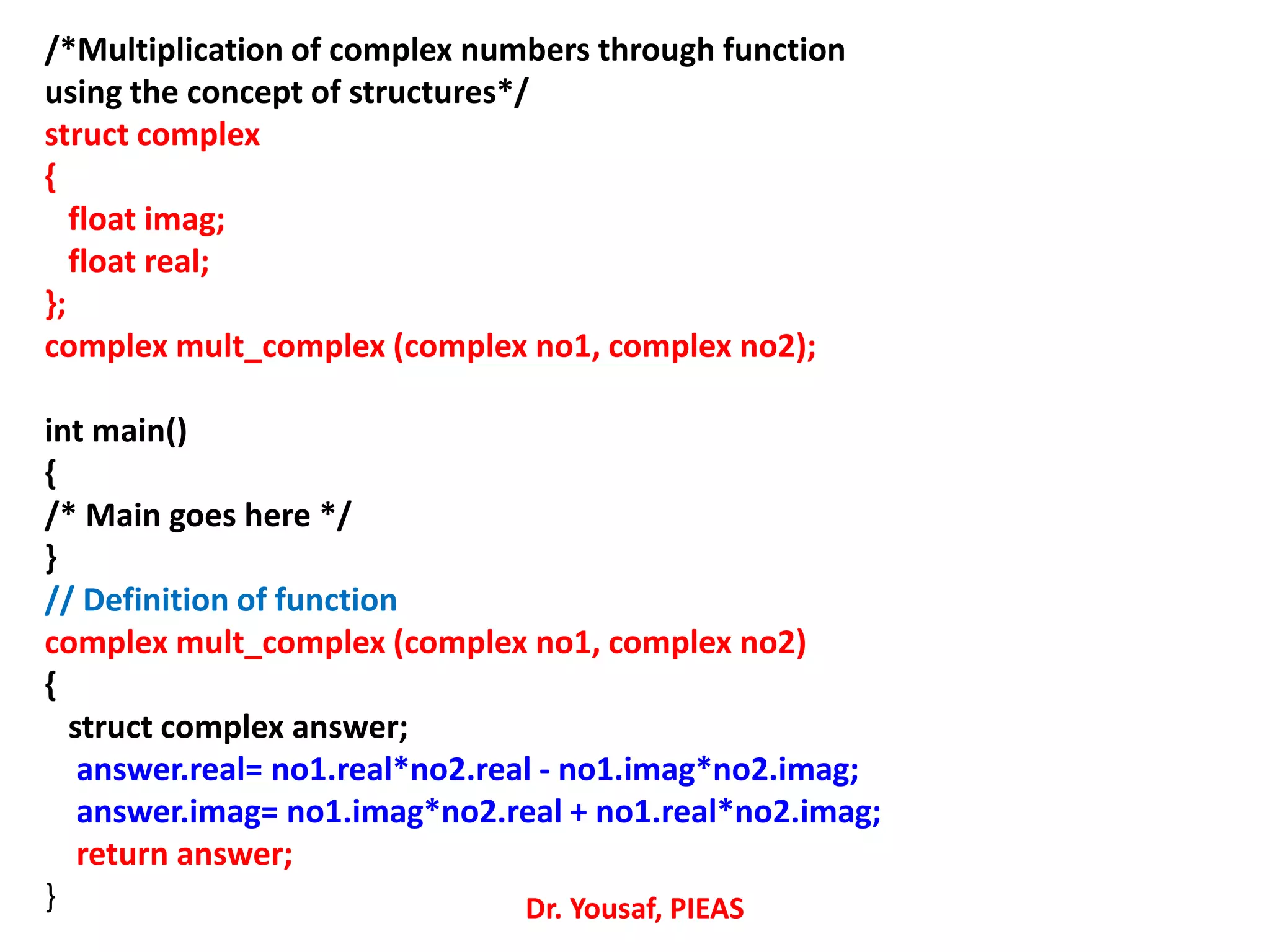

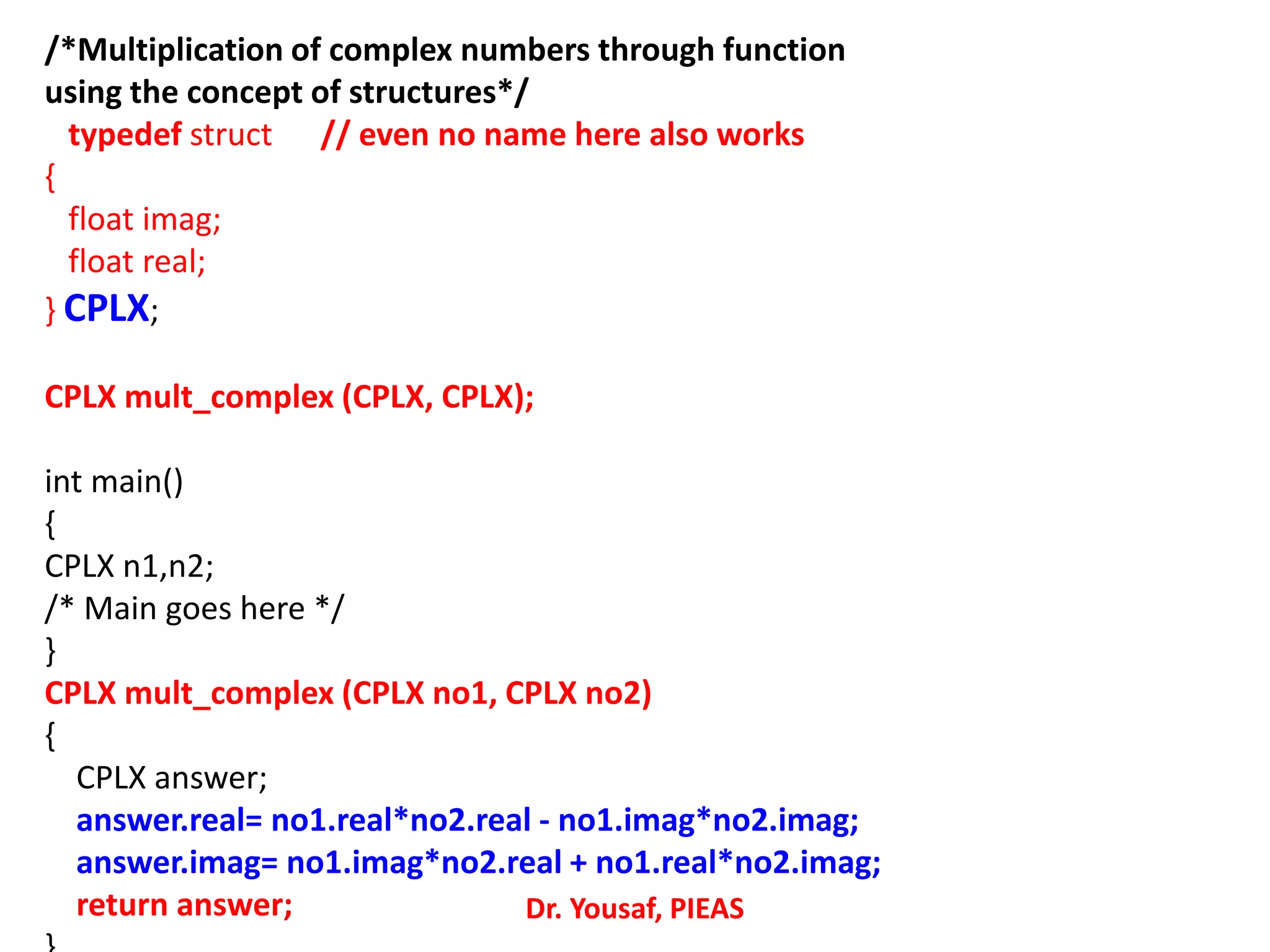
![Structures Containing Arrays
• Arrays within structures are the same as any other
member element.
• For example:
struct record
{
float x;
char y [5] ;
} ;
Dr. Yousaf, PIEAS](https://image.slidesharecdn.com/21-190313191838/75/C-Language-Lecture-21-24-2048.jpg)
![An Example
#include <stdio.h>
struct data
{
float amount;
char fname[30];
char lname[30];
} rec;
int main ()
{
struct data rec;
printf ("Enter the donor's first and last names, n");
printf ("separated by a space: ");
scanf ("%s %s", rec.fname, rec.lname);
printf ("nEnter the donation amount: ");
scanf ("%f", &rec.amount);
printf ("nDonor %s %s gave $%.2f.n", rec.fname,rec.lname,rec.amount);
}
Dr. Yousaf, PIEAS](https://image.slidesharecdn.com/21-190313191838/75/C-Language-Lecture-21-25-2048.jpg)

![Arrays of Structures
• The converse of a structure with arrays:
• Example:
struct entry
{
char fname [10] ;
char lname [12] ;
char phone [8] ;
} ;
struct entry list [1000];
• This creates a list of 1000 identical entry(s).
• Assignments:
list [1] = list [6];
strcpy (list[1].phone, list[6].phone);
list[6].phone[1] = list[3].phone[4] ;
Dr. Yousaf, PIEAS](https://image.slidesharecdn.com/21-190313191838/75/C-Language-Lecture-21-27-2048.jpg)
![Initializing Structures
• Simple example:
struct sale
{
char customer [20] ;
char item [20] ;
int amount ;
};
struct sale mysale = { “Mr. XYZ", “Biscuits", 10000 } ;
Dr. Yousaf, PIEAS](https://image.slidesharecdn.com/21-190313191838/75/C-Language-Lecture-21-28-2048.jpg)
![Initializing Structures
• Structures within structures:
struct customer
{
char firm [20] ;
char contact [25] ;
};
struct sale
{
struct customer buyer ;
char item [20] ;
int amount ;
} mysale =
{ { “Shaheen Industries", “Mr. XYZ"} ,
“Biscuits", 10000
} ;
Dr. Yousaf, PIEAS](https://image.slidesharecdn.com/21-190313191838/75/C-Language-Lecture-21-29-2048.jpg)
![// An Example
#include <stdio.h>
struct employee
{
char fname [20];
char lname [20];
char phone [10];
} ;
int main()
{
struct employee list[4];
int i;
for (i=0; i < 4; i++)
{
printf(Enter the data of employee %d:”, i+1)
printf ("nEnter first name: ");
scanf ("%s", list[i].fname);
printf ("Enter last name: ");
scanf ("%s", list[i].lname);
printf ("Enter phone in 123-4567 format: ");
scanf ("%s", list[i].phone);
}
printf ("nn");
for (i=0; i < 4; i++)
{
printf ("Name: %s %s", list[i].fname,
list[i].lname);
printf ("ttPhone: %sn", list[i].phone);
}
} Dr. Yousaf, PIEAS](https://image.slidesharecdn.com/21-190313191838/75/C-Language-Lecture-21-30-2048.jpg)
